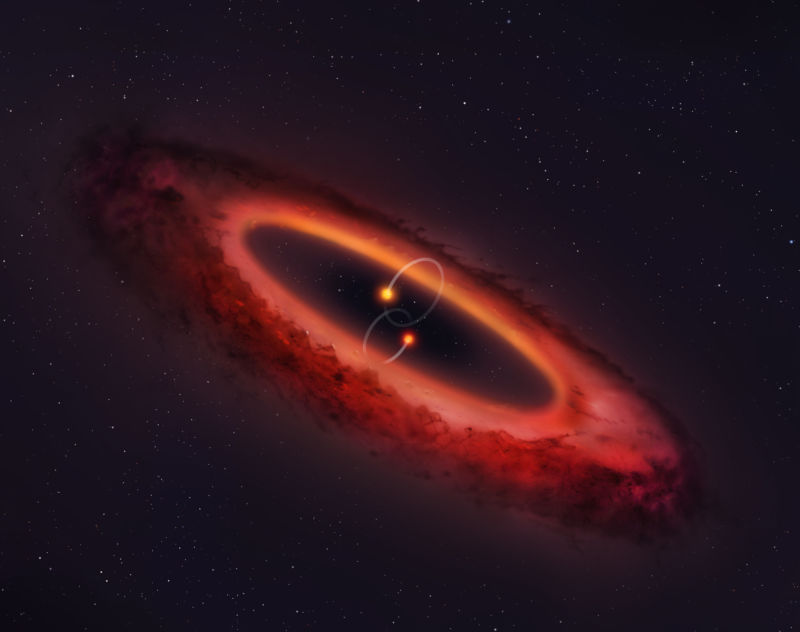System has four stars and a planet-forming disk oriented vertically

Enlarge / Artist's conception of the B binary in the quad-star system HD 98000. (credit: University of Warwick/Mark Garlick.)
Models and observations indicate that both stars and planets form as a cloud of material collapses into a disk. If the process proceeds in an orderly manner, then the planets will all form from the same disk and thus orbit in the same plane. And-because material from the same disk will fall into the star, bringing its momentum with it-the star will rotate with its equator along the same plane. That should lead to a tidy system with the equator of the star lined up with the plane of any planets orbiting it.
Except when it doesn't. Anything that upsets the even inflow of material-from clumping in disk to a passing star-can upset this process. We've seen the results: planet-forming disks and planetary orbits that don't line up with a star's equator.
Now, researchers are reporting a complex, four-star system where a planet-forming disk is lined up perpendicular to the stars so that it orbits over their poles.
Read 12 remaining paragraphs | Comments